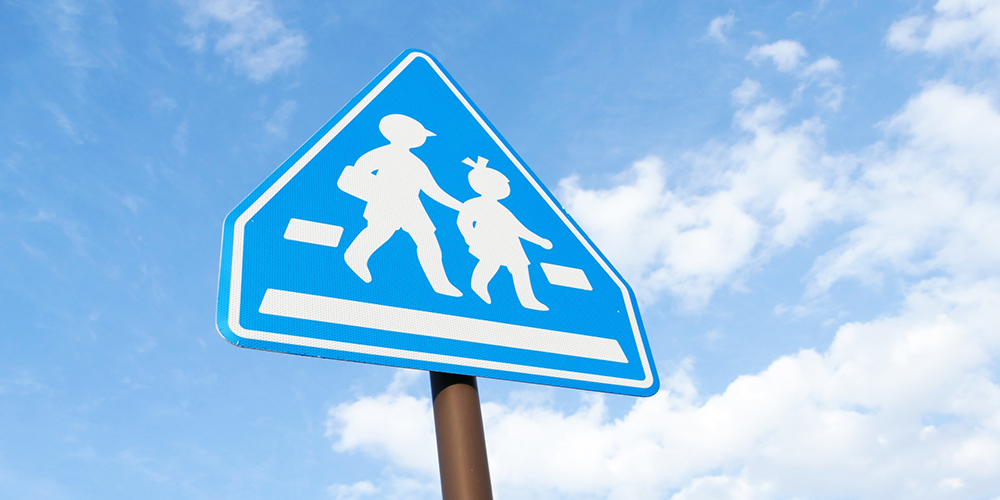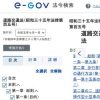Major Traffic Manners and Traffic Rules in Japan

The underlying traffic rules
In Japan, there is a fundamental way of thinking about traffic rules.
Basically, pedestrians should keep to the right, and cars and bicycles to the left.
The driver of a vehicle should yield the right-of-way to pedestrians.
Pedestrians are required to walk on the sidewalk, and when crossing a street, take a crosswalk.
When you drive, you must, in principle, travel on the roadway.
Keep on the left side of the road in a single line.
You can ride a bicycle on the sidewalk only when you are allowed to do so by a traffic sign or marking or when it is dangerous to ride on the roadway.
Don’t obstruct pedestrian traffic whenever you ride on the sidewalk.
At an intersection, you must obey traffic lights, if any.
Don’t drive or ride under the influence of alcohol.
Quote : What are the basic traffic rules in Japan? – Metropolitan Police Department
Therefore, if you fail to observe these things, you will be caught by the police for various traffic violations.
There are also many different types of road signs.
All of them will be judged according to the Road Traffic Law.
You can find all of them in the following Road Traffic Law.
※Please use translation and look it up in a language other than Japanese.
(Google翻訳 / DeepL翻訳/DeepL Translate / weblio)
Traffic rules you need to be aware of
Motorcycles under 125cc cannot use “highways" and “freeways".
Motorcycles under 125cc are not allowed to use “highways" and “freeways".
On highways and freeways, there are police cars and undercover police cars on the roads.
Also, you cannot hide behind them because you will be recognized at the toll gates.
Please check the road you are going to take beforehand.
Speed Limits in Japan
Most of the ordinary roads in Japan have a speed limit of up to 60km/h.
There are also many roads with “30km/h limit" or “40km/h" limit on road signs.
Also, many “expressways" have 80km/h to 100km/h limits, and there is a section of the New Tomei Expressway that has a 120km/h limit.
Speed limits vary from road to road, and may also change depending on the weather and road conditions of the day.
Please be sure to check the road signs.
About traffic accidents and falls
If at any time you are involved in a traffic accident (whether alone or in contact), please call 119 (or 110).
This is the number to call for an ambulance and the police or fire department.
In Japan, it is compulsory to call “119" (or “110") when you have an accident at any time.
For example, even if you have minor contact and no one is injured, you still have to call.
Also, even if you have fallen alone, you must call “119" (or “110") because you may be breaking public property, etc.
Once you have made the calls to the emergency services, fire department, and police, don’t forget to contact the rental service company if you are renting a motorcycle.
Follow the instructions on the phone as to what to do.
Failure to make these calls will result in an incident, so please be very careful.
The rules of the medical system in Japan are very different from those of other countries around the world.
Therefore, even if you call an ambulance, the cost is not as high as in other countries, and insurance is probably covered, so please do not hesitate to call.
If you do not speak the language, please ask someone nearby to call for you.
Traffic Manners in Japan
Use of hazard lamps (emergency flashing lights)
In Japan, when someone gives you the right of way or allows you to change lanes while driving, you may turn on your hazard lights (emergency flashing indicator lights).
This is a way of saying thank you for turning on the hazard lights.
Therefore, since there is no trouble, please mutter “You’re welcome." as a way of saying thank you from the other party. ^^
Japan is a country with a strong sense of giving and receiving.
The country of Japan has a sense of giving and receiving.
As a result, the timing of starts and stops may differ from the signs.
In Japan, signs and traffic rules are important, but first of all, there is a strong sense of safety, so people tend to give each other the benefit of the doubt.
If you feel uncomfortable with the flow of cars or motorcycles in front of you or behind you, please slow down and check your surroundings.
About when to change lanes
When changing lanes, if you are very afraid of changing lanes because of traffic in front of you and behind you, put on your blinker and then raise your right hand to change lanes to the right or your left hand to change lanes to the left, and use gestures to tell the surrounding cars that you are changing lanes.
Guide to major road signs
List of road signs
The main traffic signs are listed below for your reference.
| It is now in production. |



